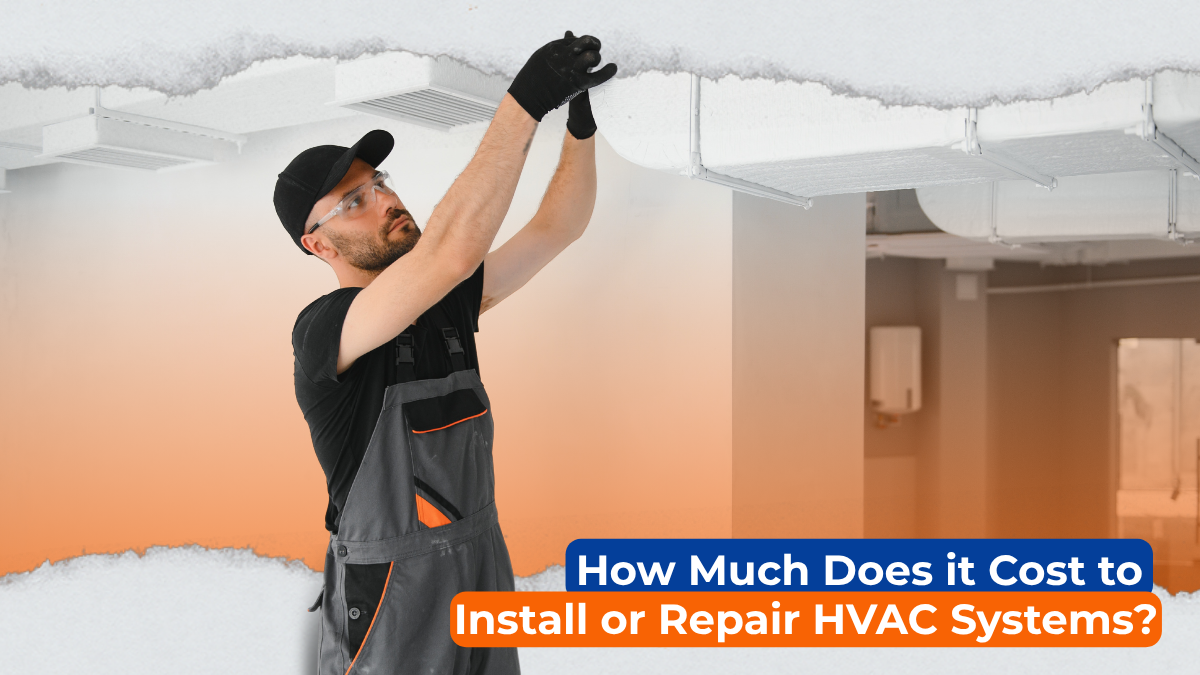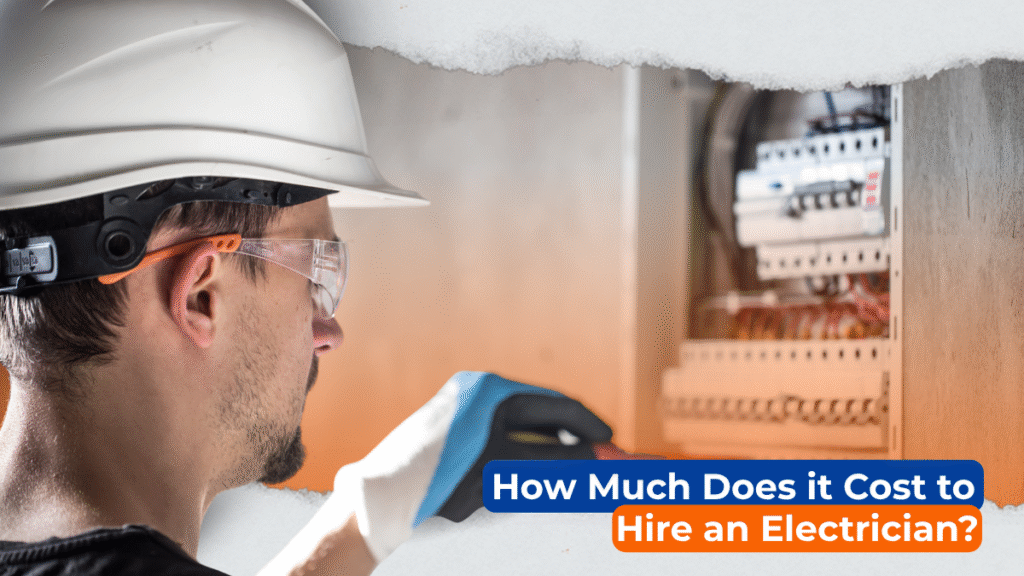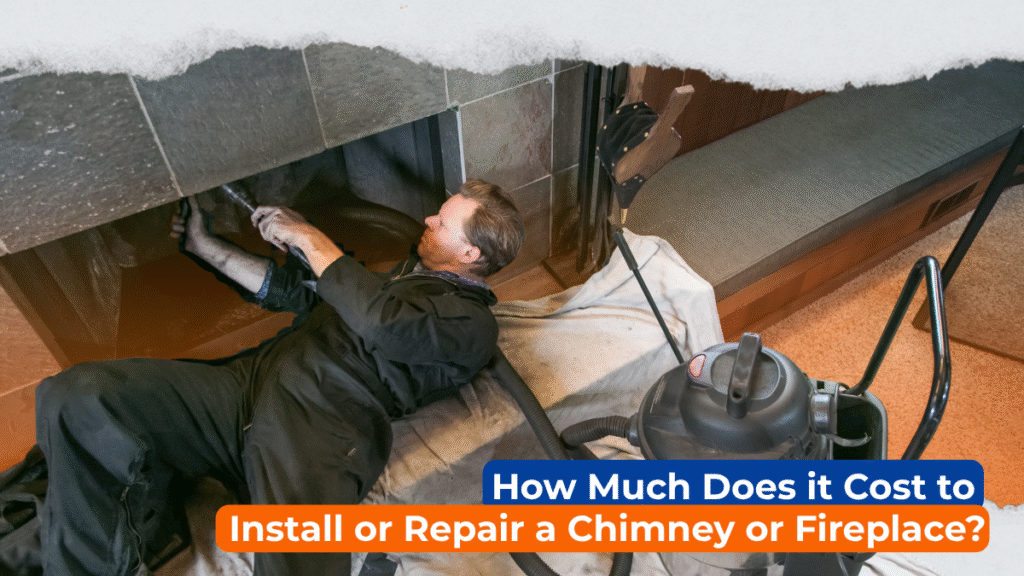Few things matter more to home comfort than your HVAC system. Whether you’re trying to stay warm in winter or cool off during a summer heatwave, heating and cooling systems keep your home livable all year. But when it’s time to repair or replace one, the first question most homeowners ask is simple: how much does it cost to install or repair HVAC systems, and what is a typical HVAC service cost?
The truth is, HVAC prices can vary widely. System type, home size, brand, labor rates, and even your region all play a part. Understanding those factors helps you plan your budget, avoid surprises, and choose the right system for your home.
At Dr. Home Fixer, we help homeowners and contractors make smart, informed decisions about home systems, including HVAC, electrical, and plumbing projects. In this guide, we’ll break down real-world pricing, cost ranges, and practical tips to help you save money while keeping your home efficient and comfortable.
What Impacts the Cost of HVAC Installation or Replacement
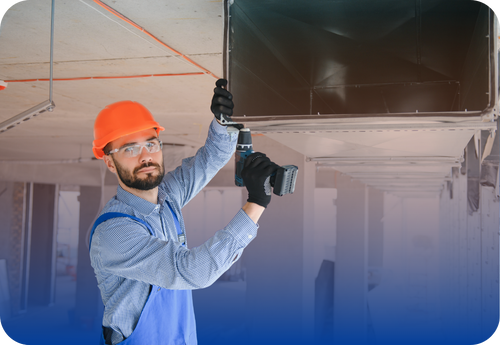
Installing or replacing an HVAC system is a significant investment, and various factors influence the overall HVAC service cost. Here’s what to consider.
Type of HVAC System (Central AC, Heat Pump, Furnace, Ductless)
Not all HVAC systems are created equal. The type of system you choose has the biggest impact on your installation cost.
- Central AC systems: Typically $3,800–$7,500 for installation.
- Heat pumps: Average heat pump installation cost runs between $4,500–$9,000. They provide both heating and cooling, so you get year-round use.
- Furnace replacements: Range from $3,000–$7,000 for gas models and $4,000–$8,000 for electric.
- Ductless mini-split systems: Great for homes without ductwork. Ductless mini-split costs range from $2,000–$6,500 per zone, depending on brand and size.
Each system type suits a different need. For example, heat pumps are ideal for milder climates, while furnaces and central AC units fit traditional homes with ducts.
Size of Your Home / System (Tonnage, Square Footage)
HVAC systems are sized by tonnage, which represents how much air the system can cool or heat. The larger your home, the higher the HVAC sizing cost.
Typical estimates:
- 1.5–2 tons for homes up to 1,200 sq. ft.
- 3–4 tons for 1,500–2,500 sq. ft. homes
- 5 tons or more for larger spaces
Every extra ton adds roughly $500–$1,000 to your installation cost. An oversized or undersized system can lead to higher energy bills and uneven temperatures, so it’s important to get professional load calculations.
Ductwork Requirements and Home Layout
If your home already has ductwork in good condition, you’ll save significantly. But for homes needing new ducts, expect to add $2,000–$5,000 to the project.
- New ductwork cost for HVAC: $15–$30 per linear foot.
- Accessible ductwork cost (easy attic or basement access): lower end of that range.
- Tight or finished spaces: It can double the labor time and cost.
Old or leaking ducts can waste 20–30% of heating and cooling energy. Many homeowners choose to replace ducts when upgrading their system to maximize efficiency and get the most out of their HVAC service cost.
Equipment Efficiency & Brand (SEER, AFUE Ratings)
The more efficient your system, the more you’ll pay upfront, but the lower your long-term utility bills.

Brands like Trane, Lennox, and Carrier command premium prices, while Goodman or Rheem offer solid performance at lower cost.
Labor, Permits & Regional Cost Differences
Labor can account for 40–60% of the total cost. HVAC labor rates typically range $75–$150 per hour, depending on region and experience.
You’ll also need permits, which may cost $100–$400 depending on your city. Homes in dense urban areas tend to see higher overall costs due to local code requirements, accessibility, and higher wages.
Typical Cost Ranges for HVAC Installation in the U.S.
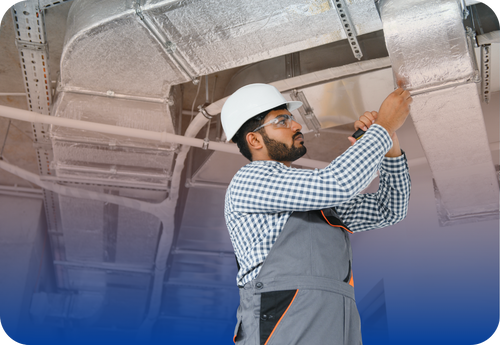
Here’s what most homeowners can expect for installation or full system replacement.
Average Cost for a Standard Home (1,500–2,500 sq ft)
The average HVAC replacement cost for a typical home is $6,000–$12,000, depending on the system and brand.
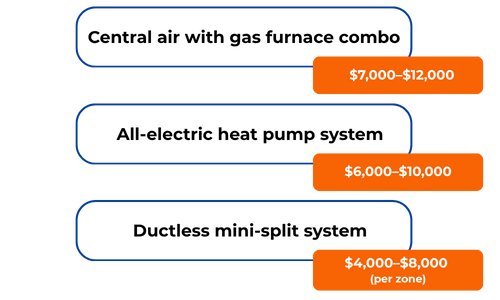
These prices usually include both equipment and labor and reflect a typical HVAC service cost for a single-family home.
Budget vs. Premium Systems
Not every home needs a top-end system. Here’s how the budget HVAC system cost compares with the premium HVAC system cost:
System Type | Budget Option | Premium Option |
Central AC | $3,800–$6,000 | $8,000–$12,000 |
Heat Pump | $4,500–$7,000 | $9,000–$15,000 |
Furnace | $3,000–$5,000 | $7,000–$10,000 |
Ductless Mini-Split | $2,000–$5,000 | $6,000–$10,000 |
Those furnace numbers are a good baseline if you are specifically researching furnace installation costs for a winter replacement. Premium systems offer higher SEER ratings, quieter operation, and longer warranties. Budget systems are fine for smaller homes or moderate climates.
Case Study: Larger Home or Complex Installation
For larger homes (3,000+ sq. ft.) or multi-zone setups, HVAC installation becomes more complex.
A multi-zone HVAC installation cost might reach $12,000–$20,000, depending on the number of zones and control systems.
One homeowner in Phoenix replaced an old 4-ton unit with two 3-ton heat pumps for even airflow across two floors. The total came to $18,500, but energy bills dropped by 25% and comfort improved dramatically. This is a good example of paying more upfront on HVAC service costs to save over time.
Cost of HVAC Repairs – What to Expect
Not every HVAC issue means full replacement. Let’s look at typical HVAC repair costs.
Common Repairs and Their Typical Costs
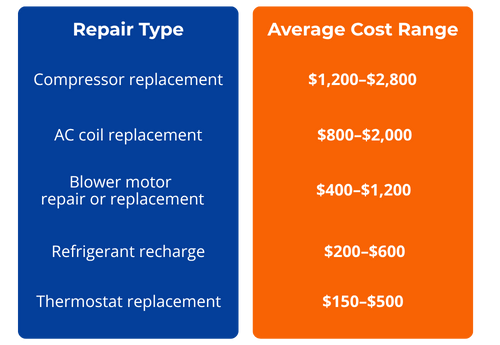
If your AC just stopped cooling, your contractor may give you an air conditioner repair pricing estimate instead of recommending a full replacement. Simple fixes like a thermostat replacement estimate tend to be on the lower end of that $150–$500 range, especially if you are swapping in a standard, non-smart model.
Regular maintenance can help prevent many of these problems, saving you money in the long run and keeping your annual HVAC service cost lower.
When Repair vs. Replacement Makes More Sense
If your system is 10–15 years old, you may start facing frequent breakdowns or poor efficiency. A good rule of thumb: if repair costs exceed 30–40% of a new unit, replacement is more cost-effective.
Older systems with outdated refrigerants or worn ductwork often cost more to maintain than to replace.
Hidden or Additional Costs to Watch
Sometimes, the total bill includes costs that homeowners don’t anticipate:
- Emergency HVAC repair cost (after-hours service): $150–$300 extra per visit
- Parts scarcity for older systems: up to 30% markup
- Warranty HVAC repair cost: Labor may not be included, even if parts are under warranty
Always ask for a detailed quote to understand what’s covered. This is the best way to avoid surprise increases in your HVAC service cost.
How to Budget and Save for HVAC Installation or Repair
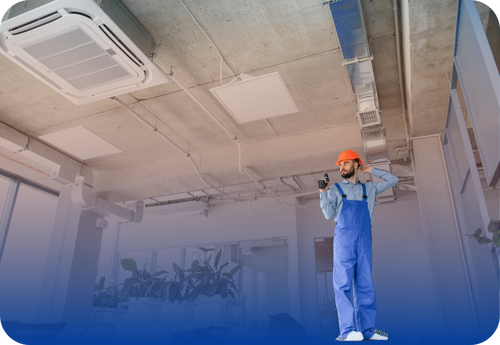
Replacing an HVAC system is a big investment, but smart planning can help reduce costs.
Getting Multiple Quotes & Comparing Costs
Always compare at least three HVAC contractor quotes. Look for licensed and insured companies with experience in your specific system type.
A written estimate should include equipment model numbers, warranty info, and what’s included (ducts, thermostat, labor, disposal).
Timing Your Installation or Repair
The best time to install HVAC is during the off-season, spring/fall, when demand is lower. Many companies offer off-season HVAC installation cost savings of up to 15%.
Scheduling outside of peak summer and winter avoids long wait times and inflated emergency pricing.
Rebates, Incentives, and Energy Efficiency Upgrades
Federal and state programs often reward homeowners for upgrading to energy-efficient systems.
For example, under the Inflation Reduction Act, qualifying households can get up to $2,000 in HVAC rebates for heat pumps or high-efficiency furnaces.
Utility companies may also offer rebates for smart thermostats or insulation upgrades.
Maintenance Tips to Reduce Future Repair Costs

Conclusion
The cost to install or repair HVAC systems in the U.S. generally ranges between $4,000 and $12,000 for installation, and $200 to $3,000 for repairs, depending on the problem and system type.
Major factors include your home size, chosen system, labor rates, and efficiency level. Investing in professional installation and regular maintenance ensures your system performs efficiently for years to come.
If you’re planning an upgrade, start by getting a professional HVAC evaluation from trusted local experts. At Dr. Home Fixer, we make it simple to find verified contractors for heating, cooling, electrical, and plumbing services, all in one place.
FAQs
How long does an HVAC system last?
Most systems last 15–25 years with proper care. Regular maintenance helps reach the upper end of that range.
What does it cost to replace ductwork with HVAC?
Replacing or adding ducts costs $2,000–$5,000, depending on home size and accessibility.
Will upgrading to a high-efficiency unit always pay off?
Absolutely, while high-efficiency systems may have a higher initial cost, the energy savings typically compensate for that difference within 5 to 10 years.
Are DIY HVAC installations or repairs feasible?
Most HVAC work should be left to professionals. Incorrect installation can void warranties and cause safety issues.
Should I clean ducts when I replace my system?
It is a good idea, especially if the old system was dirty or your home is older. Ask your contractor for current duct cleaning rates so you can bundle it with the install.
Need Help Planning Your HVAC Installation or Repair?
Whether you’re replacing an outdated furnace, comparing actual furnace installation cost with a new heat pump, installing a new ductless system, or upgrading to energy-efficient heating and cooling, Dr. Home Fixer can help.
- Track your HVAC projects from start to finish
- Get expert advice on system types, costs, and seasonal savings
- Compare estimates from reliable local HVAC pros
- Plan smarter with tools like our AI Room Designer and Get Funding options
Clear options. Honest advice. Trusted help for every project. That’s the Dr. Home Fixer way, making home improvement easier, one system at a time.

